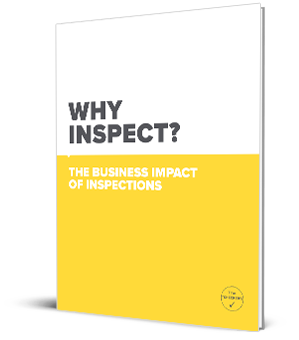In workplace safety, protecting workers from potential insect hazards might not be the first concern that comes to mind. However, insects can pose significant employee risks, especially in outdoor or construction settings. From venomous bites and stings to the transmission of diseases, these tiny creatures can have a big impact on worker well-being. Thankfully, through thorough worksite inspections, employers can implement measures to safeguard their workforce against these potential dangers. In this blog post, we'll explore the importance of worksite inspections in protecting workers from insects and how employers can create a safer work environment.
Understanding the Insect Hazard
Before delving into how worksite inspections can mitigate insect hazards, it's crucial to recognize the potential dangers of insects. Common workplace insects include mosquitoes, bees, wasps, ticks, and spiders. These pests can inflict painful bites or stings, which may result in allergic reactions or, in rare cases, even life-threatening conditions. Furthermore, insects can transmit diseases such as West Nile virus, Lyme disease, and encephalitis. Consequently, proactively addressing these risks is essential to ensure the well-being of employees.
The Role of Worksite Inspections
Worksite inspections serve as a proactive approach to identifying and rectifying potential hazards, including those related to insects. They involve a systematic examination of the workplace environment aimed at assessing potential risks and implementing preventive measures. By conducting regular inspections, employers can promote a safer work environment, boost employee morale, and comply with health and safety regulations.
Identifying High-Risk Areas
During worksite inspections, employers should be vigilant in identifying high-risk areas where insects are likely to thrive. These areas may include:
-
Stagnant Water: Standing water is a breeding ground for mosquitoes, increasing the risk of mosquito-borne diseases.
-
Outdoor Workspaces: Workers in construction sites, agricultural fields, and other outdoor workspaces are often exposed to insects, which can pose a risk to their safety.
-
Storage Areas: Warehouses or storage facilities may provide a suitable environment for insects to take shelter and multiply.
-
Waste Disposal Sites: Improper waste management can attract flies and other pests, putting workers at risk.
Implementing Preventive Measures
Once potential insect hazards are identified, employers can take specific preventive measures to protect workers:
-
Eliminating Breeding Sites: Addressing stagnant water sources and maintaining proper drainage can reduce mosquito breeding grounds.
-
Providing Protective Gear: Outfitting workers with appropriate personal protective equipment (PPE), such as long-sleeved clothing, hats, and gloves, can shield them from insect bites and stings.
-
Regular Pest Control: Enlisting the services of professional pest control companies can help keep insect populations in check.
-
Training and Education: Educating workers about insect hazards, recognizing potential bites or stings, and administering first aid can enhance employee preparedness.
-
Regular Inspections and Maintenance: Consistent inspections should be scheduled to promptly identify new risks and address existing ones.
Conclusion
Insects may be small, but they can cause significant harm to workers if their hazards are not adequately addressed. Worksite inspections play a crucial role in safeguarding employees from insect-related risks. Employers can create a safer and healthier work environment by understanding the potential dangers, identifying high-risk areas, and implementing preventive measures. Protecting workers from insect hazards promotes employee well-being and fosters a positive work culture where safety is prioritized. Insects may be part of the ecosystem, but with the right approach, they don't have to be a threat to the workforce.











